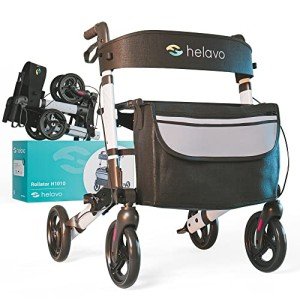The Reliable Walker: Choosing the Right Mobility Aid for Your Needs
In an ever-evolving world where mobility difficulties can occur for different factors, a reliable walker can significantly enhance an individual's quality of life. Individuals searching for independence in their motion find that a walker, often described as a walking aid, plays an important role in their day-to-day activities, whether they are recuperating from surgical treatment, dealing with chronic pain, or experiencing age-related mobility concerns.
In this post, we will discuss the significance of a reliable walker, the different types available, how to pick the very best one for your requirements, and some often asked concerns.
Understanding Walkers
Walkers are mobility devices that aid individuals with walking troubles. They supply stability and support, helping to prevent falls and enhancing confidence when navigating.
Kinds of Walkers
There are numerous types of walkers readily available, and understanding the distinctions can help you make an educated option. Below is a table summarizing the main kinds of walkers.
| Kind of Walker | Description | Advantages | Disadvantages |
|---|---|---|---|
| Standard Walker | A basic walker without wheels, needing users to raise it to move. | Offers maximum stability; basic design. | Can be cumbersome; less maneuverable. |
| Two-Wheeled Walker | Equipped with two wheels at the front for easier motion. | Simpler to move; more lightweight. | Less stable than a basic walker. |
| Four-Wheeled Walker | A wheeled walker with four wheels, frequently with a seat and hand brakes. | Extremely maneuverable; appropriate for outdoor use; stability with seating. | Requires some upper body strength to run the brakes. |
| Rollator | A four-wheeled walker with a seat and storage area. | Ideal for longer distances; comfortable seating choice. | Less stability than standard walkers; can be more expensive. |
| Hemi Walker | Developed for those who can utilize only one hand or lower limb. | Useful for one-handed support; lightweight. | Might not supply as much support as standard alternatives. |
Secret Factors to Consider When Choosing a Walker
Picking the right walker is essential for security and self-reliance. Here are some key aspects to consider:
1. User's Physical Condition
- Examine the user's balance, strength, and variety of motion. Some users may need more support and stability, while others might prefer something lighter and more mobile.
2. Meant Use
- Consider where the walker will mainly be used-- inside, outdoors, or both. Walkers designed for outdoor usage typically feature larger wheels.
3. Weight Capacity
- Ensure that the walker can support the user's weight. Many walkers feature weight capacity requirements, generally varying from 250 to 500 pounds.
4. Adjustability
- Try to find a walker that can be changed in height to ensure correct posture and convenience while walking.
5. Extra Features
- Many walkers come with features such as brakes, seats, baskets, and even built-in lights. Examine which features are needed for the user's needs.
6. Looks
- While functionality is vital, numerous modern walkers are designed with aesthetics in mind. Select one that the user feels good about utilizing.
The Benefits of a Reliable Walker
Using a reliable walker has numerous benefits, including:
- Increased Independence: Users can move by themselves without relying greatly on others for support.
- Boosted Confidence: A stable walker offers users the security they need to move easily, minimizing the fear of falling.
- Enhanced Stability: Walkers significantly improve balance, especially for those with mobility problems.
- Boosted Quality of Life: With enhanced mobility, users can engage more actively in social, recreational, and daily activities.
Frequently Asked Questions (FAQ)
1. How do I know if I require a walker?
If you discover walking to be challenging, experience frequent falls, have actually just recently had surgery, or have chronic conditions impacting your mobility, it might be time to think about a walker.
2. Can I utilize a walker on outdoor surface areas?
Yes, but think about getting a four-wheeled walker or a rollator designed particularly for outdoor surfaces, as they usually have bigger wheels for better maneuverability.
3. How can I change my walker for the very best fit?
A lot of walkers have height-adjustable legs. Stand in your shoes, and with your arms unwinded at your sides, the top of the walker should be at wrist level.
4. How do I maintain my walker?
Regularly inspect the walker for any loose screws or parts, guarantee the wheels are moving smoothly, and tidy it periodically to keep its condition.
5. How can I construct my self-confidence while utilizing a walker?
Start utilizing the walker in familiar and safe environments. Gradually increase the intricacy of your surroundings as you become more comfortable.
In conclusion, a reliable walker is not simply a mobility aid; it's a way to higher independence, security, and enhanced quality of life. Understanding click web page of walkers available and assessing personal requirements can assist individuals make informed options. Whether it's a standard walker or a modern rollator, the right equipment promotes self-reliance and self-confidence in mobility.
If you or a liked one deals with mobility difficulties, think about buying a walker that satisfies individual requirements, enhances mobility, and ultimately, enriches everyday living. With the right choice, users can reclaim control of their motion, cultivating a more active and satisfying life.

